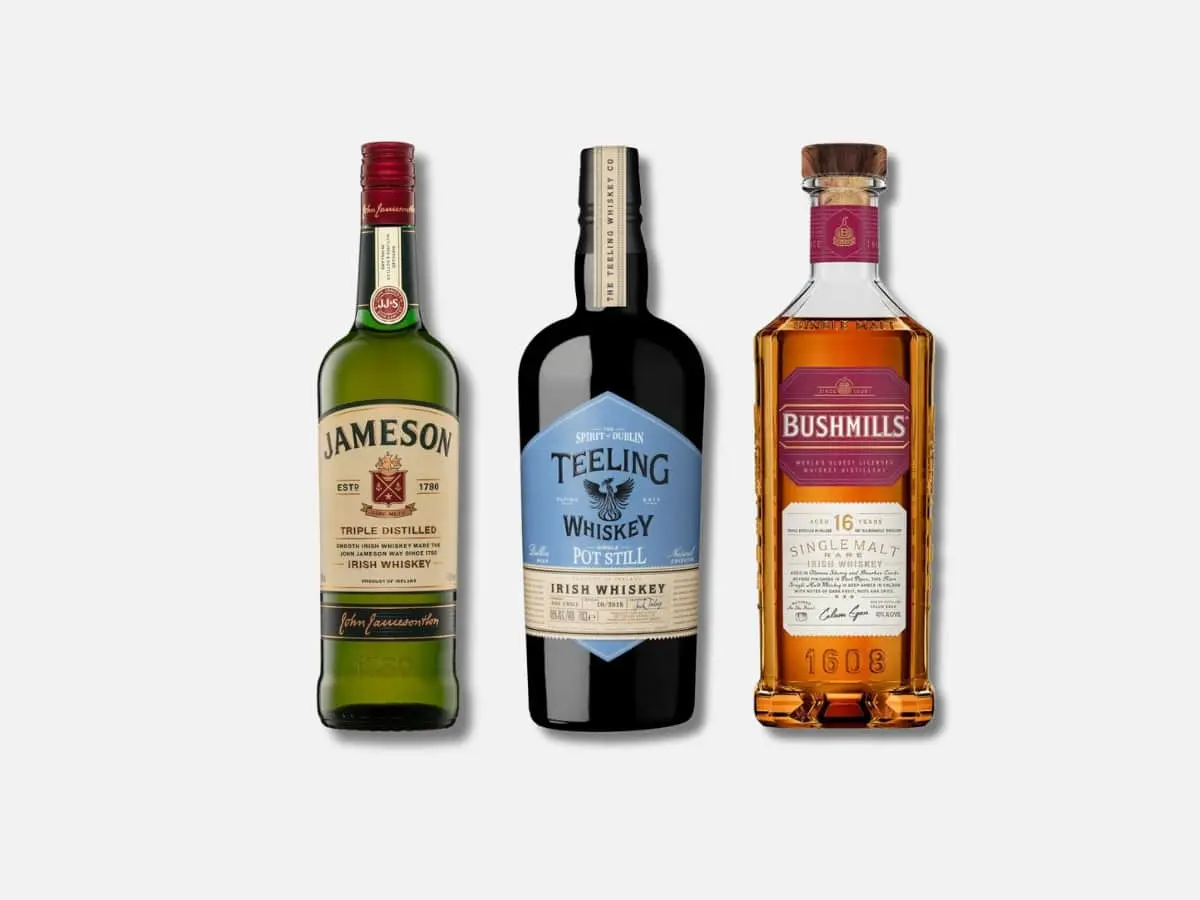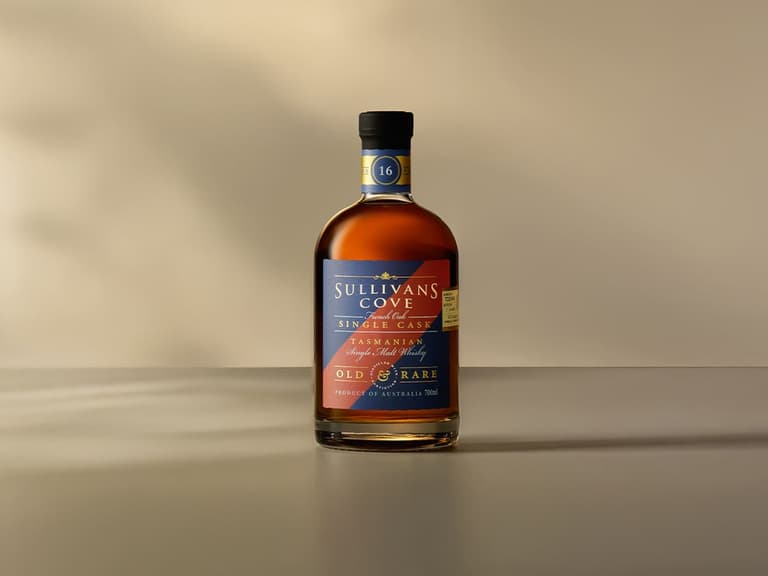
Published: Last Updated:
Readtime: 20 min
Every product is carefully selected by our editors and experts. If you buy from a link, we may earn a commission. Learn more. For more information on how we test products, click here.
The best Irish whiskeys give you more than a great alternative to Scotch. They’re special in their own right with production methods that allow a little more flexibility in their grains (can be made from any combination of cereal grain) and distillation techniques that result in unique flavours. With the help of our drinks expert Christopher Osburn, our team of experts have curated a list that goes beyond the popular labels, diving deeper into a few you may not have heard of that deserve a place in your drinks cabinet.
Best Irish Whiskey at a Glance
Highlights from our list include the following bottles:
- Best overall: Redbreast 12 Year Old
- For value for money: Green Spot Single Pot
- For the collector: Midleton Very Rare
- For something new and different: Jameson Black Barrel
Now we’ve had a brief look at our favourites, let’s check out the complete list.
RELATED: These are our favourite Japanese whiskies to drink.
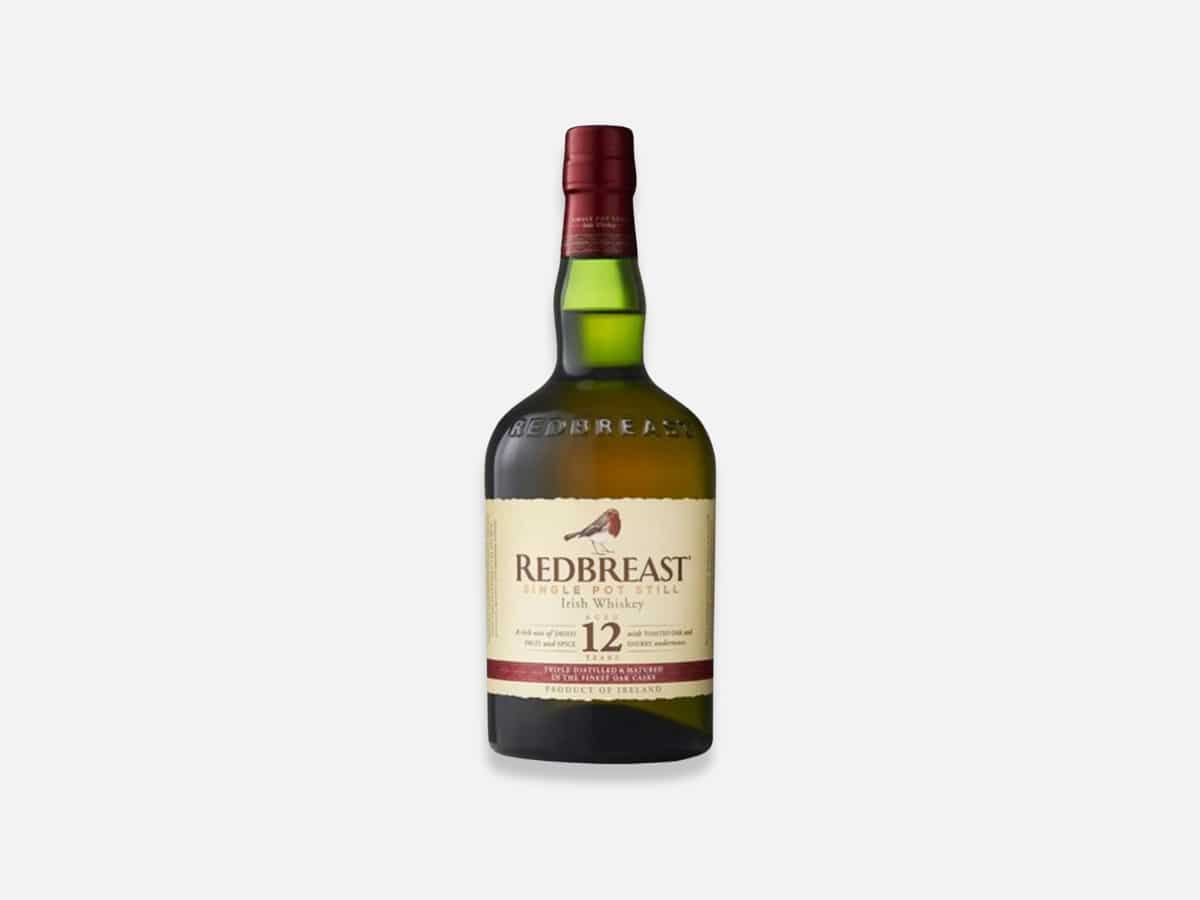
1. Redbreast 12 Year Old
Price: from AU$119.95
- Pros: The purest expression of Irish whiskey you’ll find, and maybe the tastiest too. This dram has defined the whole segment with nothing but malted and unmalted barley, triple distillation, and oak casks for purity. You’ll love the clean creamy vanilla and full mouth feel.
- Cons: Some reviewers online like to point at the fairly ‘weak’ 40% ABV, claiming that the whiskey doesn’t have enough bite on the palate. However, we think this works better with the overall flavour profile and creaminess.
Our favourite all-around Irish whiskey, Redbreast 12 year old defines the whole genre and ticks every box along the way. It’s the purest expression, made from 100% malted and unmalted barley before being triple distilled at the acclaimed Midleton Distillery in oak casks to let the liquid do all the talking. Yeah, it costs a bit more than your Jamesons and Teelings, but that’s because it’s more enjoyable and special.
The nose is enough to tell you this is a special bottle with plenty of fun oakiness and vanilla before nuts and zesty lemon emerge in the glass. On the palate you’ll find cream before a full-bodied mouthfeel, and plenty of cookies, caramel, and pastry. It’s like tasting the first bite of a chocolate croissant. You know that bit where you get the perfect ratio of pastry to chocolate? Imagine that bite with a little icing sugar on top and that’s Redbreast 12 year old.
Now, let’s assume you’ve already got a bottle of Redbreast in your drinks cabinet. The next logical step is to pick up the American Oak Series, which was unveiled in 2022. As we noted upon its official release, the Kentucky Oak Edition is made from malted and unmalted barley, triple distilled in copper pot stills and matured in American Oak Bourbon barrels and Spanish Oloroso sherry butts. From there, the whiskey is then finished for three to seven months in naturally air-dried PEFC-certified American Oak. It’s as good as it sounds on paper.
Outside of that, you should keep an eye out for the 19-year-old Redbreast, and should you be lucky enough to sample the 21-year-old’s dense body of honey, sherry, and grain, you may never look at alcohol the same way again.
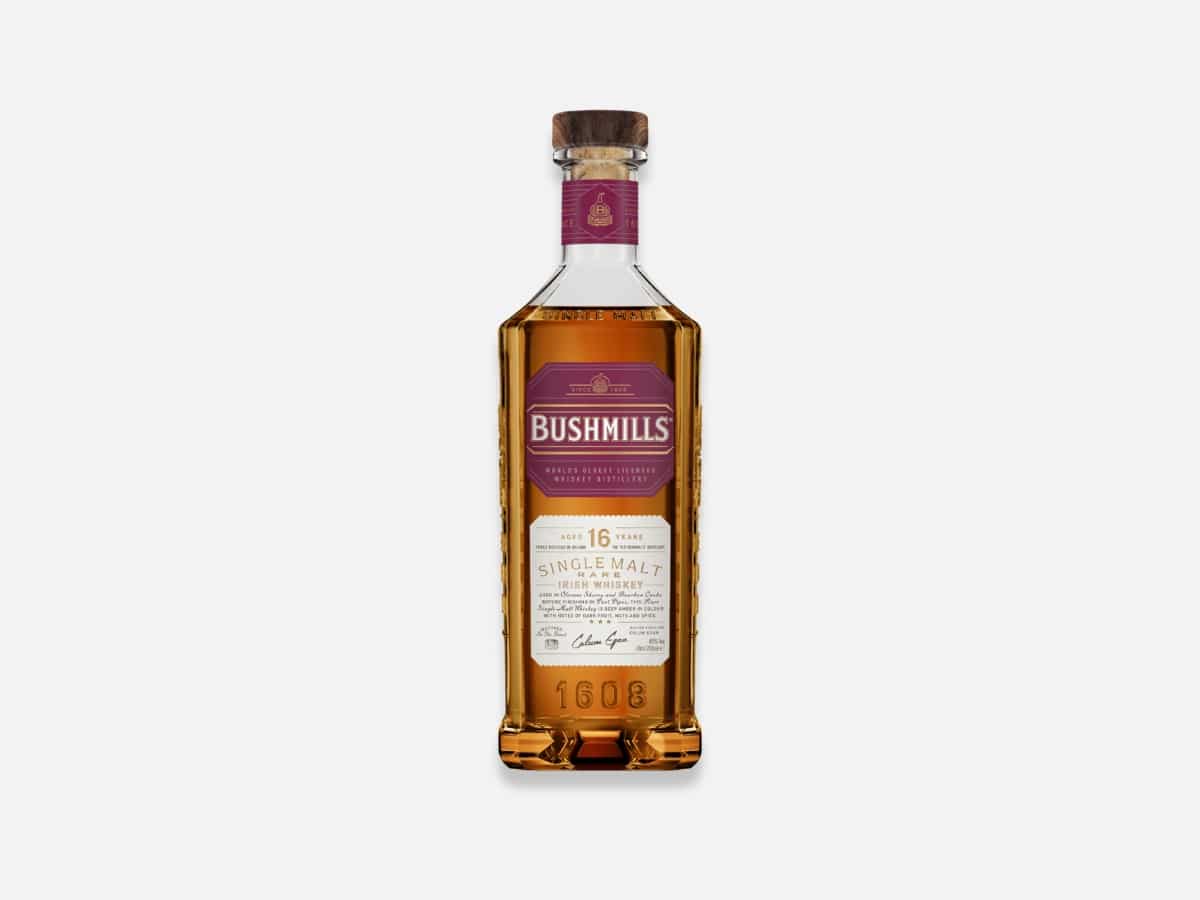
2. Bushmills 16 Year Old
Price: from AU$149
- Pros: Lovely nose, even better palate, and a remarkable finish all at a reasonable price point for a 16-year-old dram. It’s difficult to criticise this bottle from Bushmills. If you love cherries and dark fruits, this is your new favourite.
- Cons: One of the sweeter Irish whiskeys money can buy with red wine-like qualities, even a little vermouth on the palate. If you’re looking for a bitey option this wouldn’t be our choice as the ABV is fairly sedate at 40%.
Thanks to a holdover license from a previous operation, Bushmills claims to be the oldest licensed distillery in the world. It’s also one of Ireland’s best, offering a range of popular blends and acclaimed single malts. The 10-year Single Malt is fruity, full-bodied, and sweet, while the 21-year Single Malt is the closest thing we’ve tasted to liquid heaven. However, it’s the 16-year-old offering that left our taste buds salivating.
The brand takes its triple-distilled single malt and pours half of it in ex-sherry barrels for 16 years and the other half in ex-bourbon barrels for the same amount of time. They then combine the two in port barrels for a final finishing touch. The result is expectedly sweet with plenty of cherries, dark fruits, and red wine on the palate. Much of this can be attributed to the port finish, but there are obvious hints of sherry and seeded fruits from the maturation process. The mouthfeel is rich, well-rounded, and to add another cliche, smooth. Don’t be afraid to drink this one because it’s delicious and pleasantly affordable for a 16-year-old.
Of course, like any great whiskey brand, the buck doesn’t stop at one or two great general releases. If you’re a connoisseur, you’ll want to try their series of experimental releases, and we recommend starting with The Causeway Collection. This includes several limited-edition single malts finished in a variety of different ways, utilising both modern and traditional processes. It kicks off with the 2006 Marsala Cask finish, which underwent over 12 years of ageing in a combination of oloroso sherry and bourbon casks before finishing in Marsala casks for an additional 18 months.
“Whiskey is a sensory journey of sight, smell and taste. It is a spirit to be savoured, the colour of the liquid, the first aromas and the subtle flavours that come to the fore as you sip are all imparted by the spirit’s maturation process,” Helen Mulholland, Bushmills master blender told us at the time. “Innovation is at the heart of what we do and this year we are focusing on new product development with the release of The Causeway Collection 2006 Marsala Cask finish.”
From there, Bushmills kept the experimental train rolling, unveiling the 2011 Banyuls Cask, a rich and bold take on Irish whiskey, bottled at a stunning decadent 53.6% natural cask strength. It was followed up with the 2008 Douro Cask Finish and the 2012 Burgundy Cask. Mulholland went on to explain that the new collection was named after the legendary Giant’s Causeway, which flanks the village of Bushmills and the old distillery on the County Antrim coast of Ireland.
“Just a stone’s throw from the distillery, the Giant’s Causeway has always inspired me. It is an elemental and enigmatic place full of wonder, legend and geology. Where extraordinary hexagonal basalt columns, honed over millennia, form a unique interlocking series of steps found nowhere else in the world – much like the expressions in this Collection,” she told Man of Many.
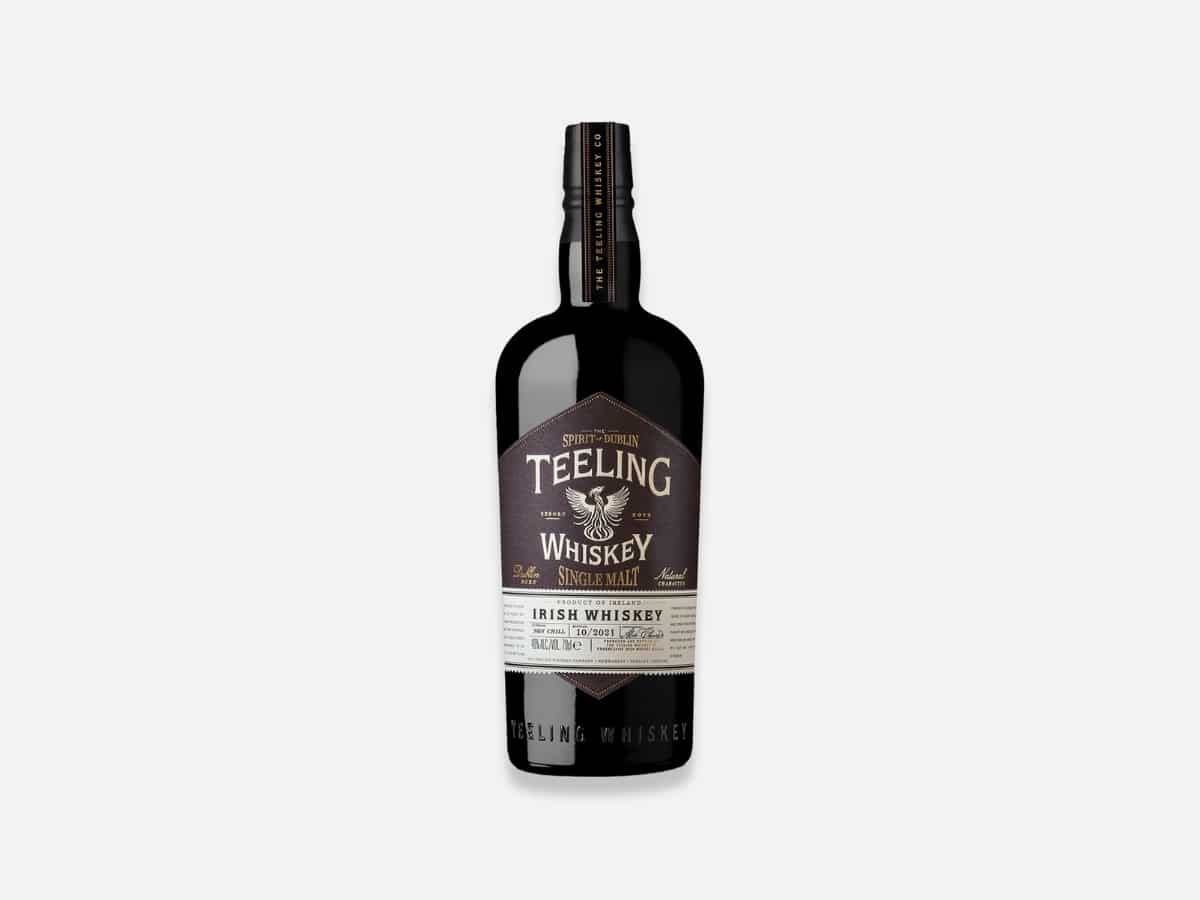
3. Teeling Single Malt
Price: from AU$88
- Pros: Delicious, clean, and with a little butterscotch on the finish, Teeling’s Single Malt release is one of the best value-for-money options on our list. There’s an oakiness to the mid-palate that develops sweet complexity which is a little unexpected for the price point.
- Cons: Quite a crisp flavour with a mouthfeel that’s a little thin compared to the aged variants on our list. If you prefer a sweet sherry or rum cask, this isn’t something you’ll enjoy.
Equipped with three copper pot stills, Teeling Distillery opened in 2015 and became Dublin’s first new distillery in over 125 years. While it’s still a relatively new brand on the Irish whiskey market, it’s cemented itself as a beacon of quality, not to mention affordability. The label stakes its claim on providing bottles versatile enough for cocktails and neat sippers. For fans of the top shelf, they do a range of high-end releases, including the 24-Year-Old Single Malt, but our favourite all-rounder has to be Teeling Single Malt.
The chardonnay colour is a clear indicator that this is your quintessential triple-distilled Irish whiskey with plenty of white grape flavours. You’ll find white wine on the nose before a little oak spice on the palate and a notable Christmas egg-nog-like flavour on the finish. Some reviewers online noted an awkward cheddar note on the late finish, but that wasn’t something we encountered in our testing.
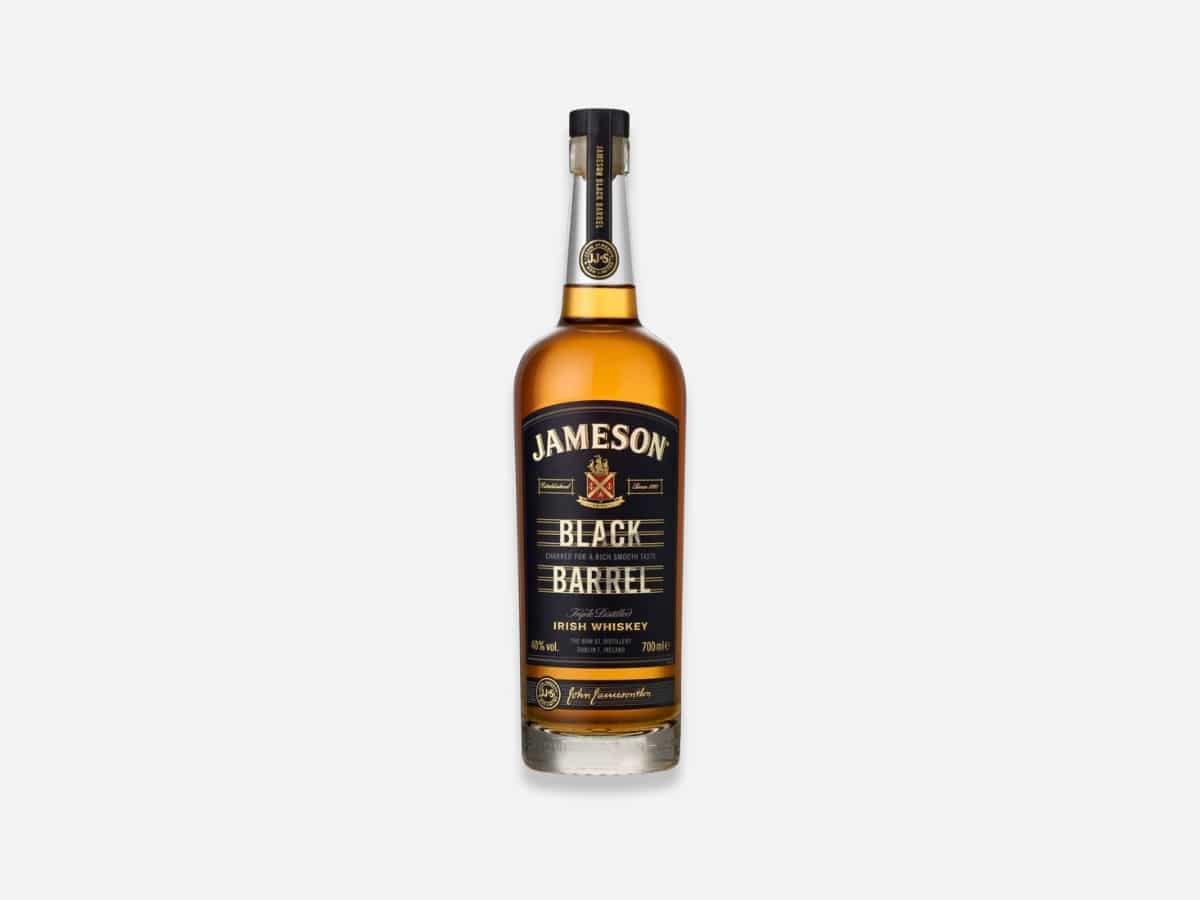
4. Jameson Black Barrel
Price: from AU$88
- Pros: Creamy vanilla with a little fruit spice courtesy of apricots and peaches on the mid-palate. This is the Irish whiskey we love serving our bourbon-loving friends and it also makes one of the best old-fashioned cocktails we’ve ever tried.
- Cons: Some reviewers found the flavour palate a little generic and thin with no notable notes outside of caramel and raisin. However, we don’t think this could be farther from the truth. Let it breathe in your glass for 5 mins before your first sip.
More than the world’s most popular Irish whiskey brand (by a substantial margin), Jameson is one of the best-selling whiskeys on the planet. Seriously, try to find a bar that doesn’t keep scores of it on hand—we dare you.
What’s surprising, however, is the consistent quality delivered by the label’s flagship statement. Despite all the mass production, you’ll find smooth and toasty notes of malted barley with hints of sweetness. Move beyond the namesake bottle and there’s no shortage of interesting expressions to try. You can do no wrong picking up the 18-year, and if you’re feeling experimental, try the Caskmates Series, which results from an exchange program between Jameson and various beer breweries.
Our favourite Jameson to drink right now is the Black Barrell release that punches well above its price tag with plenty of vanilla, apricot, peach, and caramel. It’s the Irish whiskey we serve to our welded-on bourbon-drinking friends and they love it. Don’t be turned off by the fact it’s been aged in double charred barrels because there’s no amount of smokiness here, it’s all flavour.
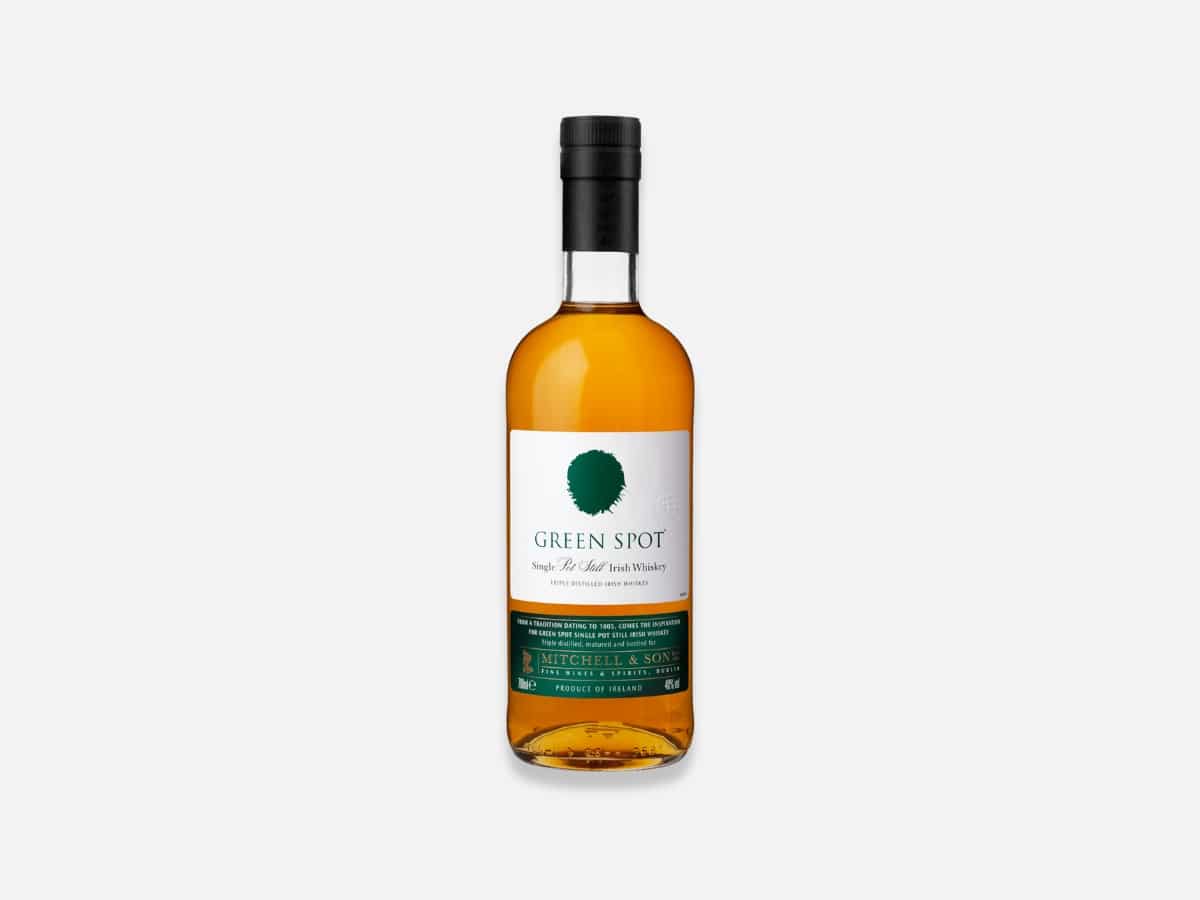
5. Green Spot Single Pot
Price: from AU$94.99
- Pros: Good, clean, and tasty. This is the next logical step up from Jameson. It has more complexity to it, which makes it the perfect bottle for someone who wants to develop a diverse palate. You’ll love the cookie palate and mocha finish.
- Cons: It tastes good, but there’s nothing specific that makes Green Spot stand out amongst the myriad of Irish whiskeys on the market. Still, we think it’s a great option and we love drinking it.
If you love a Jameson but want to try something a little different, check out Green Spot Single Pot. While it doesn’t carry an age statement, the website says this Irish whiskey is aged and matured in a combination of ex-bourbon and ex-sherry casks for anywhere from 7-10 years.
In terms of flavour profile, it’s nothing unique, but that doesn’t make it any less delicious with dense aromas of vanilla and toffee along with a wonderful, fruit-forward taste. It’s more affordable than Redbreast 12 year old and offers some of the same general flavours, particularly on the finish where there’s a combination of chocolate cake, lemon curd, and cappuccino.
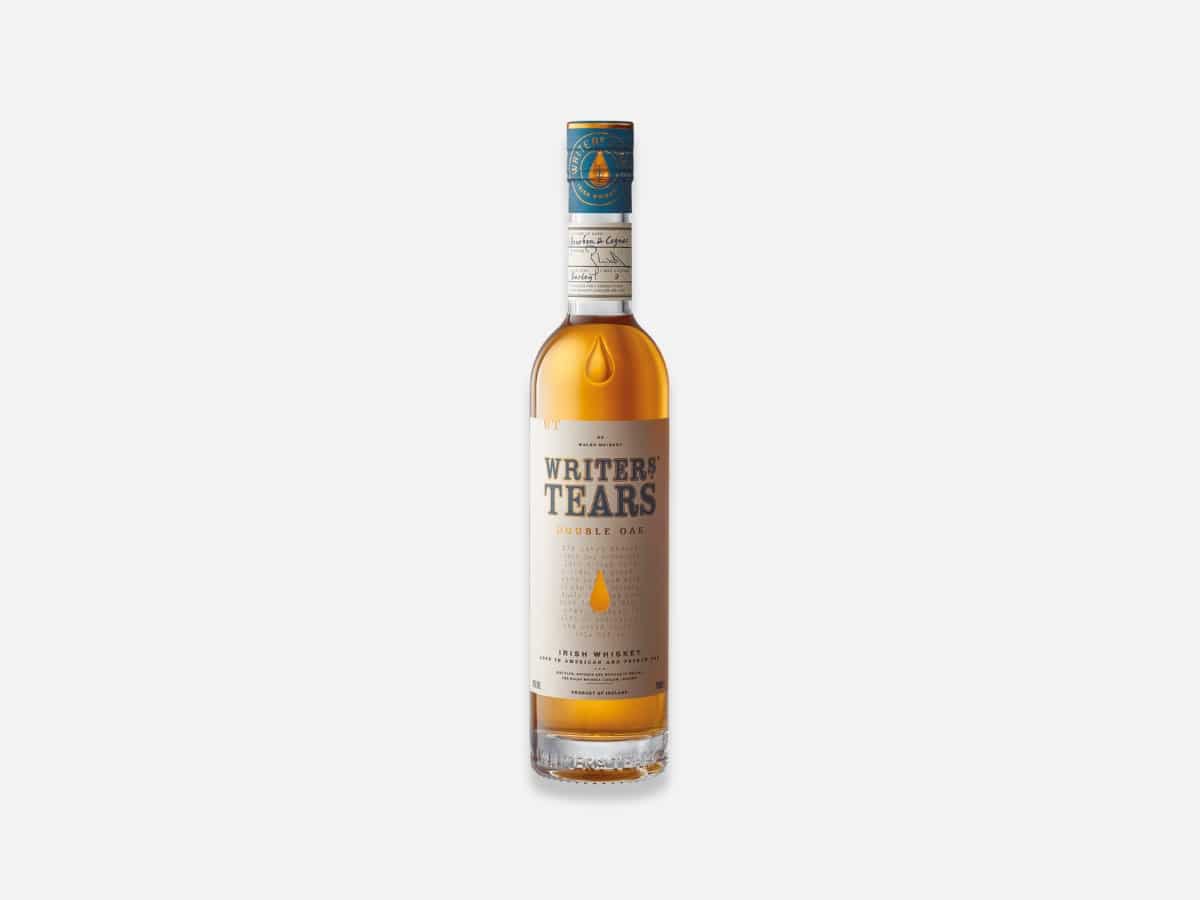
6. Writers Tears Double Oak
Price: from AU$103.95
- Pros: Complex in its ensemble with maturation in ex-Bourbon and ex-Cognac casks, but perfectly executed to blend the best of both worlds at a nice spicy 46% ABV.
- Cons: It’s a no-age statement blended Irish whisky, but it’s priced close to the 12+ year old statements on our list. While the flavours are there, it’s a big price to pay for blended.
Representing a blend of single pot and single malt drams, Writers Tears is still a relatively new label to the market paying tribute to the country’s long history of brilliant, miserable writers. One might expect it to go harsh on the palate, but our testing revealed it to be quite the opposite. You’ll find a blend of triple distilled single pot still and Irish single malt liquid before it’s matured in a mix of ex-Bourbon and ex-Cognac casks and bottled at 46%. Thankfully, that complex combination yields great results and there’s a good balance between the dried fruits in the cognac and the sweetness of apples, pears, and cinnamon in the bourbon.
If you want to try something different, check out the Copper Pot series which offers a rare glimpse into what Irish whiskey is like at its very best. As we noted upon its release, the dram has a very luxurious caramel colour and being triple distilled is incredibly smooth, with sweeter hints of vanilla due to the whisky being matured in bourbon casks.
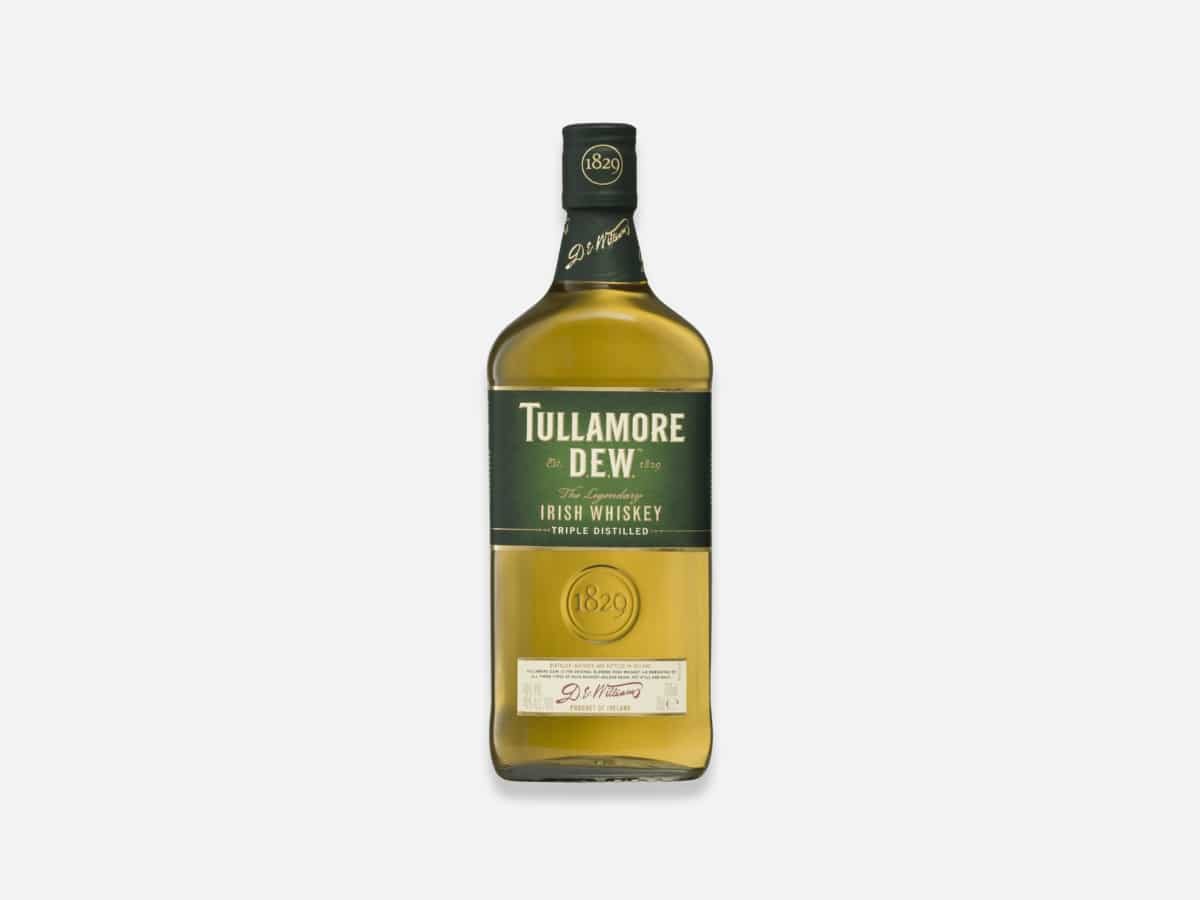
7. Tullamore DEW
Price: from AU$53.90
- Pros: Amazingly, you can still find good quality Irish whiskey for around $50 in Australia. You’ll get all the quintessential flavours from something like Redbreast but at a fraction of the cost. Think toffee, butter biscuits, and fruits like peaches and apricots.
- Cons: Mouthfeel is thin, as is the liquid in the glass. Still, it’s cheap!
If you want to know what ‘Irish whiskey’ tastes like at an affordable price, check out Tullamore DEW. The original bottle is a tasty blend that’s aged and matured in ex-bourbon and ex-sherry casks. While flavours are great on the palate with plenty of toasty toffee and shortbread, the mouthfeel is a little thin and the colour in the glass is a touch artificial-looking. That being said, it’s about as expected for something that can be found for around $50 in Australia. For something a little more unique, we’d be pointing you towards the 12 year old Special Reserve or the Trilogy 15 year old.
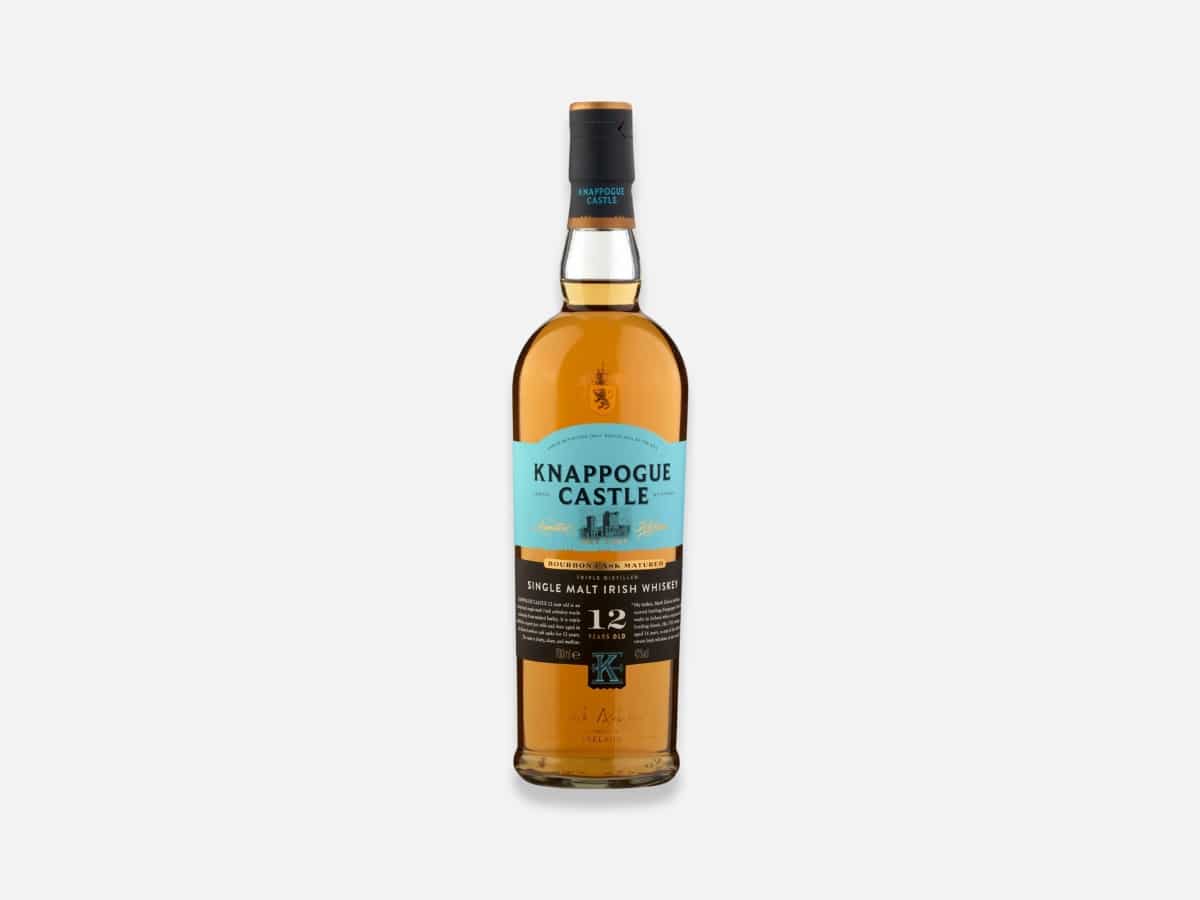
8. Knappogue Castle 12 Year Old
Price: from AU$120
- Pros: One of the most popular and sought-after 12 year old Irish whiskeys on the market, it’s the only true challenger to Redbreast 12 year old in our humble opinion. If you can find a bottle, you’ll love the quince paste flavours with apple, pear, and dried fruits like apricot.
- Cons: Widely available overseas, this is a tough brand and bottle to find in Australia and you’re often forced to buy from overseas and import which can take a while.
There’s nothing more Irish than a brand named after a historic castle and that brand is Knappogue Castle. We’ll immediately point you towards their infamous 12 year old release that ranks among the best we’ve tried at this age statement. Think apples, pears, and all those delicious fruity notes with plenty of smoothness across the palate. If that’s a little generic for your liking, get around the 16 year old Sherry Cask Finish and/ or the 12 year old Bourbon Cask Matured, which are both triple-distilled and impeccably smooth as a result. The brand also earns points for its acclaimed limited-edition releases, such as the 1994 Master Distiller’s Private Selection.
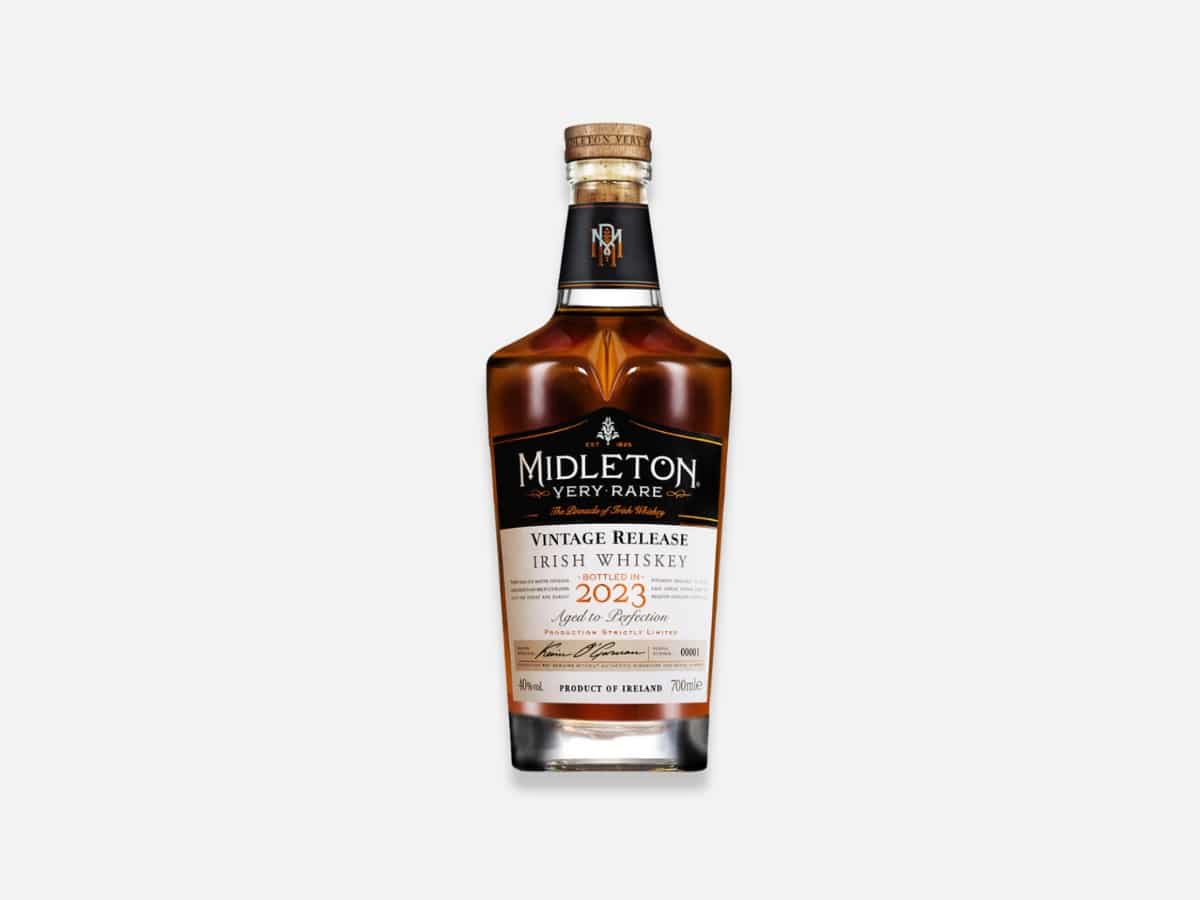
9. Midleton Very Rare
Price: from AU$360
- Pros: Delicious, quintessential Irish whiskey that fills your palate with all the richness of dried fruit and spice that we’ve come to love from this destination.
- Cons: Very expensive for what is a fairly simple whiskey. Yes, it’s delicious, but from a value-for-money perspective there’s better options out there.
Often considered to be the ‘Pappy Van Winkle’ of Irish whiskey, your favourite bottles and brands originate from this distillery and owe it a lot of favours. Think Jameson, Redbreast, and Powers.
The label’s most recent expression, Midleton Very Rare 2023, started life in lightly charred ex-bourbon American oak barrels where it sat for 12-33 years before being bottled in 2023.
It was touted as their rarest and best expression to date, but after tasting it’s hard to justify the price point. Yes, it arrives in a nice wooden box with wallpaper-style print on the outside and the liquid inside the bottle is delicious, but it’s mainly an emotional purchase for those who want to signal a great year in their life. Would we buy a bottle for ourselves? Probably not. However, if you like sweet spice, dried fruit, and gram crackers, this could be something worth trying.
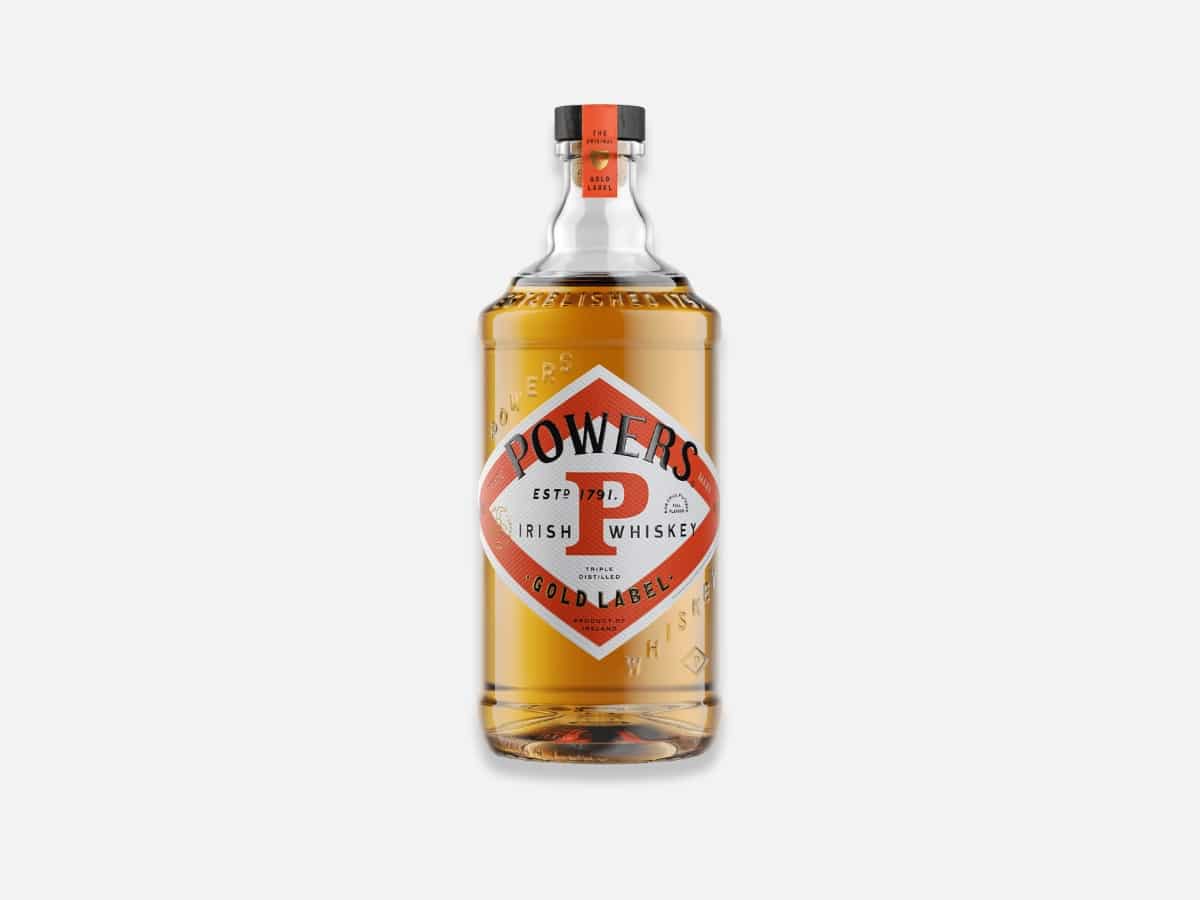
10. Powers Gold Label
Price: from AU$60
- Pros: Awesomely affordable, this is a great fruity Irish whiskey that has surprising complexity for a bottle priced well under $100.
- Cons: The nose isn’t quite as fruity as what you find on the palate. Mouth feel is filling, but a little thin compared to the age statements on our list.
Powers Gold Label was both the first Irish whiskey to be bottled and (at one time) the country’s best-selling whiskey. Thanks to a recent relaunch, the legend is back and arguably as great as ever. Powers John’s Lane Release 12-Year is every bit as rewarding as all the acclaim suggests, but our overall favourite is the Powers Gold Label with its crispy blend of honey, dark fruits, and medium-bodied mouth feel. If you love Bushmills 16 Year Old, this is a great alternative at an affordable price point.
Classification: Triple Distilled Single Pot Still Irish Whiskey
Origin: Midleton Distillery
Mashbill: Single Pot Still
ABV: 40%
Age: No age statement
Alternatives to These Irish Whiskeys
The following whiskies are good, but didn’t make the top of our list for a few reasons:
- West Cork (from AU$70): There’s a decent chance you haven’t heard of West Cork, but this independent distillery has come a long way in little time. Statements such as the 10-Year Single Malt are warm, toasty, and sweet. Coming in at 124 proof is the Cask Strength blend, which packs a wallop in terms of strength and flavour alike. While the brand’s current portfolio won’t necessarily blow your mind, it’s easily worth exploring.
- Celtic Cask (from €110.00): What began as one of the world’s greatest liquor stores is now the name behind some truly rare and delicious juice. After establishing itself on the retail front, the Celtic Whiskey Shop in Dublin started bottling premium whiskeys from veteran distilleries under the banner of Celtic Cask. Experienced sippers swear by expressions like the Cuig Deag and Ocht 8 Single Malt 1991. Oh, who are we kidding? There isn’t a bad release in the bunch. Sure, the price tags are high, but you get what you pay for, i.e. some of the best whiskey in Ireland. Yum.
- Connemara (from AU$104.99): Crafted at Cooley Distillery, Connemara’s flagship single malt is among the few peated Irish whiskeys on the market. As such, it delivers ample smoke on the nose and palate. Also present are notes of honey, barley, chocolate, and salt. If you’re looking for something a little different than the standard Irish fare, you’ve found it here.
Why You Should Trust Our List
You can be sure that every entry on our list will go down smoothly and deliver a distinctive tier of character because we’ve been writing about the water of life for more than 10 years. Our team of experts have taken Christopher Osburn’s lead and narrowed down a succinct list of their favourites, removing all those that yield significant burn and leave a foul taste behind.
The biggest criticism of Irish whiskey is that they all pretty much taste the same, so we’ve removed the fat from the middle of the market, choosing only those bottles that balance flavour with value for money. If this is your first time trying the stuff, we recommend starting with a Jameson before moving onto something like a Bushmills 16 year old or Redbreast 12 year old.
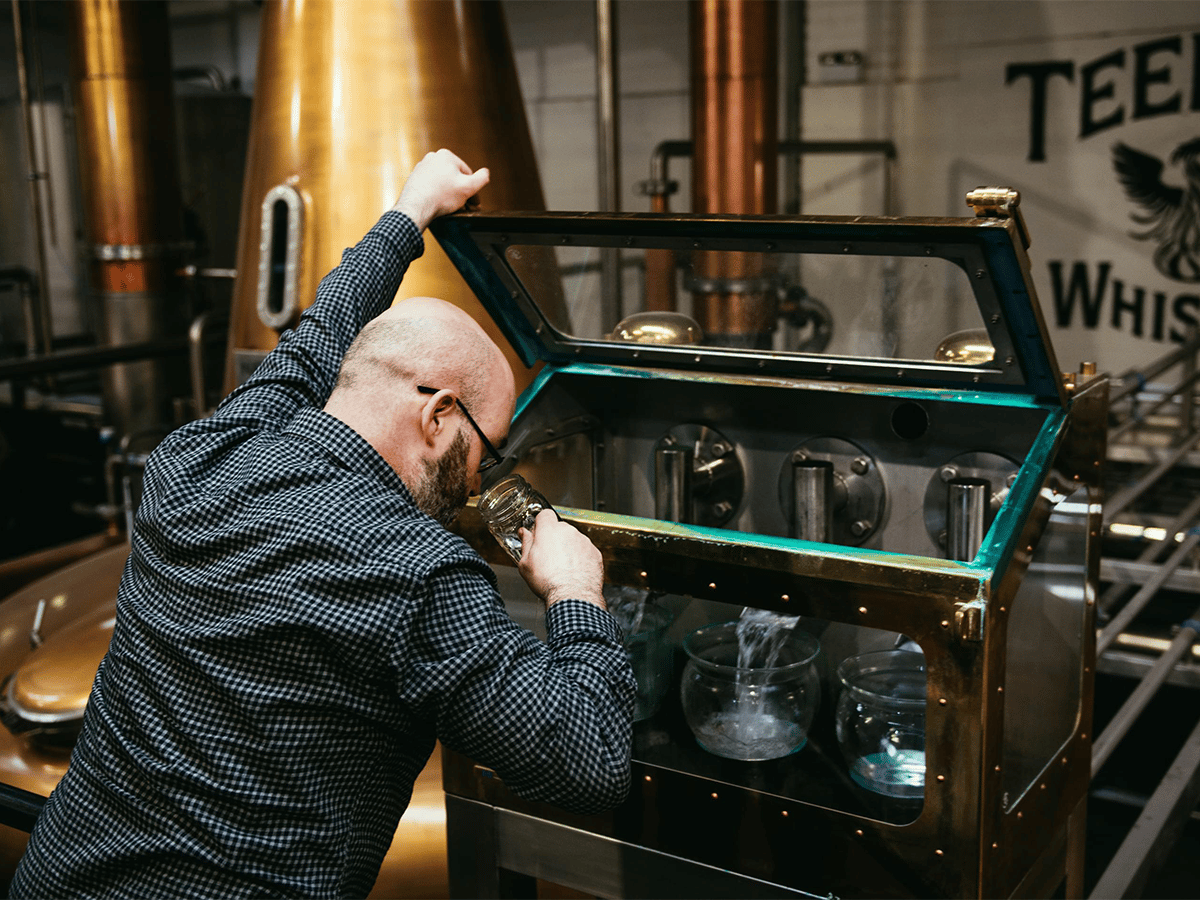
What is Irish Whiskey?
The tradition of distilling whiskey in Ireland goes all the way back to 12th-century Irish monks. In fact, the word “whiskey” is Irish in origin (it translates to a phrase mentioned above—see if you can find it). Origin stories aside, you might be wondering, what distinguishes Irish whiskey from Bourbon or Scotch in terms of production and taste? Let’s take a look.
| Irish Whiskey Guide | |
|---|---|
| Introduced | 13th-15th Century |
| Alcohol Volume | 40–94.8% |
| Proof (US) | 80–189.6° |
| Weight | 16 kg/ 35 lbs |
| Colour | Pale gold to dark amber |
These Are the Different Types
There are a variety of Irish whiskey types, and they are as follows:
| Irish Whiskey Types | |
|---|---|
| Pot Still | Made (in a pot still) using a mix of malted barley and unmalted grain. |
| Single Malt | Single malt whiskey was made entirely from malted barley in a pot still. |
| Single Grain | Single-grain whiskey often comes from a variety of grains – is made from continuous distillation in a column or Coffey still, and is most commonly used in blends. |
| Blended | Blended Irish whiskey represents a mixture of the aforementioned types. |
Because the majority of Irish whiskies are triple distilled and made from a variety of grains, they tend to be lighter in taste when compared to the average Scotch or bourbon. Furthermore, Irish distilleries rarely incorporate peat during production, which means the spirit is usually absent of any smoky elements. Generally speaking, Irish whiskeys are smooth, grainy, a little nutty, and a little sweet.
Regulations Are More Relaxed Than Scotch
Nearly all sub-genres of whiskey abide by a strict set of regulations, and Irish whiskey is no exception. First and foremost, it must be distilled and matured in Ireland – well, duh. Secondly, it must come from a mash of malted cereals with or without whole grains of other cereals, which has been fermented by the action of yeast, distilled at an ABV of no more than 94.8 per cent, and aged for at least three years in wooden casks. The resulting spirit must have a minimum ABV of 40 per cent.
How Does Irish Whiskey Differ From Scotch Whisky?
The main difference between Irish whiskey and Scotch whisky is how they’re distilled. Irish whiskey is distilled three times vs. two times in Scotch (according to tight regulations). These regulations on Scotch also mean that it has to be made from 100% malted barley, whereas the Irish can use any combination of cereal grain.
Why Do You Use An ‘E’ In Irish Whiskey?
It was said to be used as a marketing tactic to differentiate the poor-quality Scotch whiskey that flooded the market in the 19th century from the ‘high-quality’ Irish whiskey. Today, the legend continues and we only ‘drop the e’ when we talk about Scotch.
You’ll also like:
